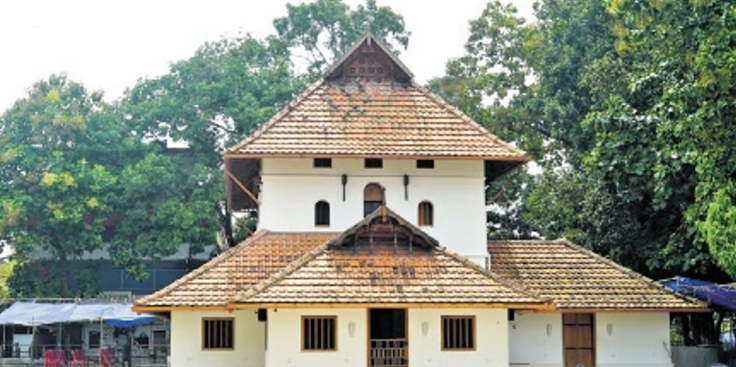Discovering a Storied Legacy
KOCHI: Around a decade ago, a group of dedicated scholars embarked on a mission to document and digitize the rich and storied legacy of Islam in Kerala. Their monumental project has culminated in the Islamic Heritage Museum, located within the historic Cheraman Juma Masjid in Kodungallur. This museum is now home to Kerala’s largest digital repository of Islamic history.
A Comprehensive Archive
The project goes beyond merely chronicling centuries of history. It delves into the lifestyles, literature, cuisine, art, and culture of Kerala’s Muslim community. The archive is a veritable treasure trove, containing information on customs, religious rituals, astronomy, navigation, mathematical discoveries, and computational methods.
The researchers, spearheaded by the Muziris Heritage Project, analyzed over 100,000 documents, including texts, sounds, videos, and photographs, collected from all corners of the state. The epicenter of this research was the Kodungallur mosque, established in 629 CE, the earliest mosque in Kerala.
Rewriting History Beyond the Colonial Lens
While the contributions of Kerala’s Muslim community, known locally as Mappila, are widely documented, much of this history has been viewed through a colonial lens. “Historians are now working to shift this perspective, moving from a land-based to a maritime-based approach to understand our rich heritage,” says H M Ilias, a professor at MG University and a key member of the research team.
P A Muhammad Saeed, another team member, highlights the importance of community life in understanding history. “We collected documents from families, mosques, madrassas, and private collections, providing crucial insights into the origins of Islam in Kerala,” he explains.
Tracing the Origins of Islam
A significant part of the museum’s collection is recorded in Arabic, Arabi-Malayalam, Malayalam, and Persian. It explores migration histories, the nuances of Sufism, and the medical practices of Kerala’s Muslim communities.
The starting point for tracing the origins of Islam in Kerala was the state’s first history book, Tuhfat Ul Mujahideen, written in the 16th century by Zainuddin Makhdoom II of Ponnani. This text discusses the history of Kerala and the Muslim obligation to resist colonial powers. However, the researchers had to look beyond this text to understand the deeper roots of Islam in Kerala.
The Lore of Cheraman Perumal
A central figure in the lore of Kerala’s Islamic history is Cheraman Perumal, a Chera king. According to legend, after witnessing a lunar eclipse and the moon splitting in two, Perumal sought an explanation. When his court could not satisfy him, he turned to Arabian traders in his city, who introduced him to Islam.
The story goes that Perumal traveled to Mecca, met the Prophet Muhammad, and converted to Islam. However, historical timelines vary, with some placing this event in the 7th century, others in the 8th or 12th centuries. It is believed that Perumal died on his return journey and was buried in Oman. His companions, returning to Kodungallur, propagated Islam in Kerala.
Buddhist Connections
Saeed suggests that the Cheraman mosque might have originally been a Buddhist temple, citing the absence of a significant Muslim population around the mosque during its early years. This theory aligns with the timeline of Perumal’s travels and the mosque’s major reconstruction after the 15th-century flood that destroyed Muziris port.
Expanding the Project
The project grew as researchers traced the spread of Islam and the life of the community through centuries. Using lore, folk songs, letters, trade documents, and texts, they pieced together a comprehensive history of Islam in Kerala.
Rare and Fascinating Finds
The digital archive houses rare finds, such as the first Quran translated from Arabic to Arabi-Malayalam, and details about Duffmuttu, an art form believed to predate the Prophet Muhammad. The collection also includes medicinal texts like Ashtanga Hridayam in Arabi-Malayalam and documents on Unani medicine.
The archive features the first travelogue by a Muslim woman, written in the 1920s by a woman who visited Mecca. This travelogue uniquely records time in both the Malayalam and Islamic calendars.
Contributions and Collaborations
The research team, including A T Yusuf Ali and the Centre for Development of Imaging Technology (C-DIT), played a crucial role in collecting and digitizing the documents. They interviewed individuals with personal ties to the history, such as a man over 100 years old who had been deported from Malabar to the Andaman Islands during British rule.
Many documents were sourced from notable houses and mosques, including Edathola House, Thanoor and Ponanni mosques, and the homes of prominent figures like Nellikuthu Muhammadali Musaliyar and Kondotti K T Rahman Thangal.
An Expanding Scope
What began as a narrow historical inquiry has blossomed into a vast project. The Islamic Heritage Museum now stands as one of the largest digital repositories of Islamic life in Kerala, offering invaluable resources to researchers and scholars worldwide.
Architectural Insights
The project also explores Islamic architecture in Kerala, documenting various mosques that blend Arabic, Persian, and Kerala architectural styles.
This ambitious project not only broadens our understanding of Kerala’s Islamic history but also opens new avenues for future research. The Cheraman Islamic Heritage Museum is a testament to the rich and diverse history of Islam in Kerala, now accessible to the world.
